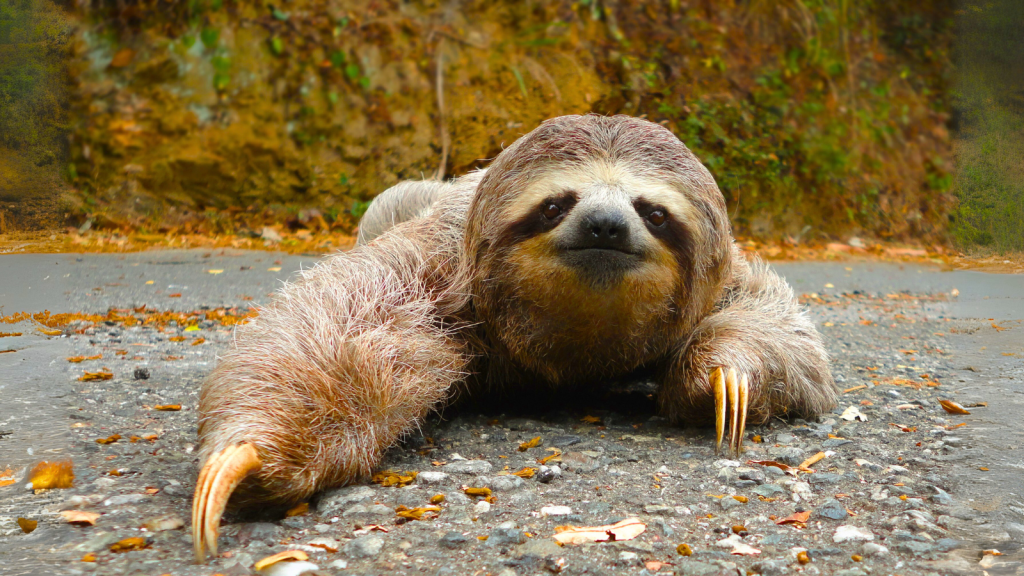Sloths, those adorable slow-moving creatures, have captivated our hearts with their laid-back lifestyle and gentle demeanour. But there’s more to these tree-dwelling mammals than meets the eye. Hidden beneath their sleepy exterior lies a world of fascinating adaptations and quirky behaviours. From their upside-down lifestyle to their unexpected swimming abilities, sloths are full of surprises. Let’s explore some of the most intriguing facts about these lovable creatures that will make you see them in a whole new light.
They’re Not Actually Lazy
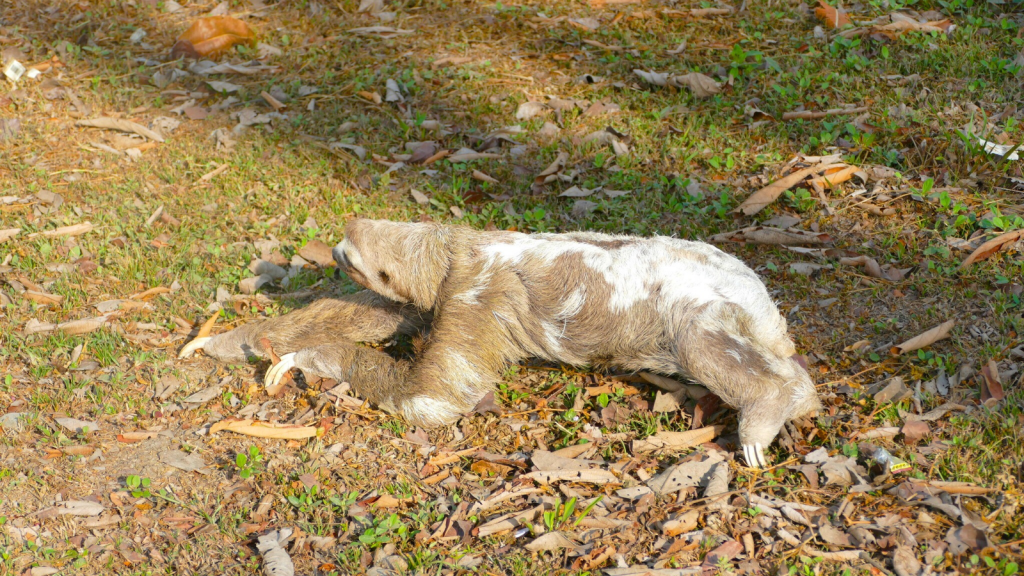
Contrary to popular belief, sloths aren’t lazy at all. Their slow movement is a clever survival strategy. By moving slowly, they conserve energy and avoid detection by predators. This energy-efficient lifestyle allows them to survive on a low-calorie diet of leaves. In fact, sloths are so energy-efficient that they use only about 10% of the energy that a similar-sized mammal would typically use in a day.
Sloths Are Champion Swimmers

Despite their reputation for being slow on land, sloths are surprisingly good swimmers. They can move three times faster in water than on land. Sloths use their long arms to do a breaststroke-like motion, easily crossing rivers and streams. Their ability to hold their breath for up to 40 minutes makes them even more adept at navigating aquatic environments.
Their Fur Grows Upwards
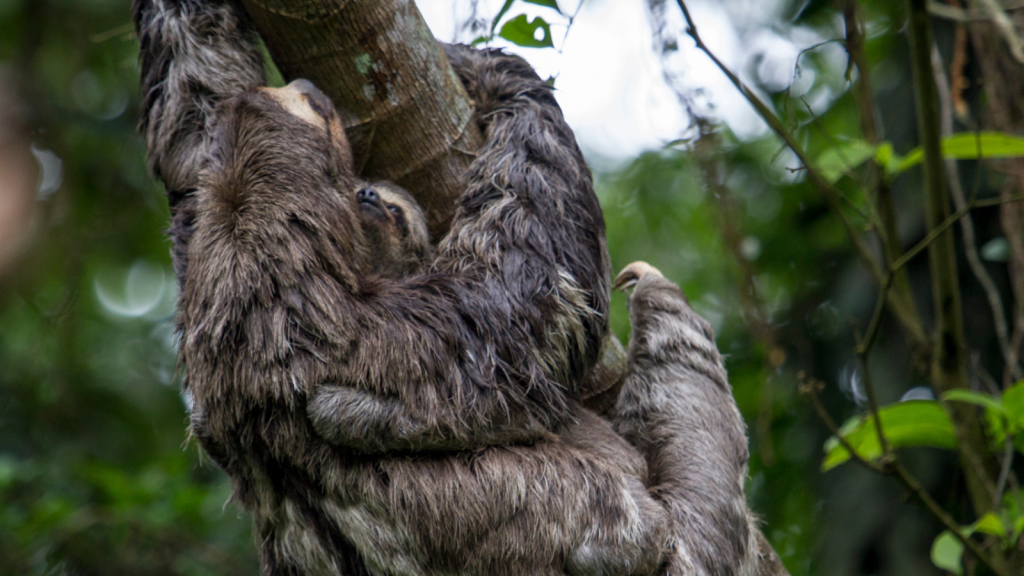
Unlike most mammals, sloth fur grows from their belly to their back. This unusual growth pattern helps water slide off their fur when it rains, keeping them dry as they hang upside down. It’s a clever adaptation to their treetop lifestyle. Additionally, this unique fur direction creates a natural part along their spine, which helps rainwater flow away from their body more efficiently.
Sloths Have Extra Neck Vertebrae
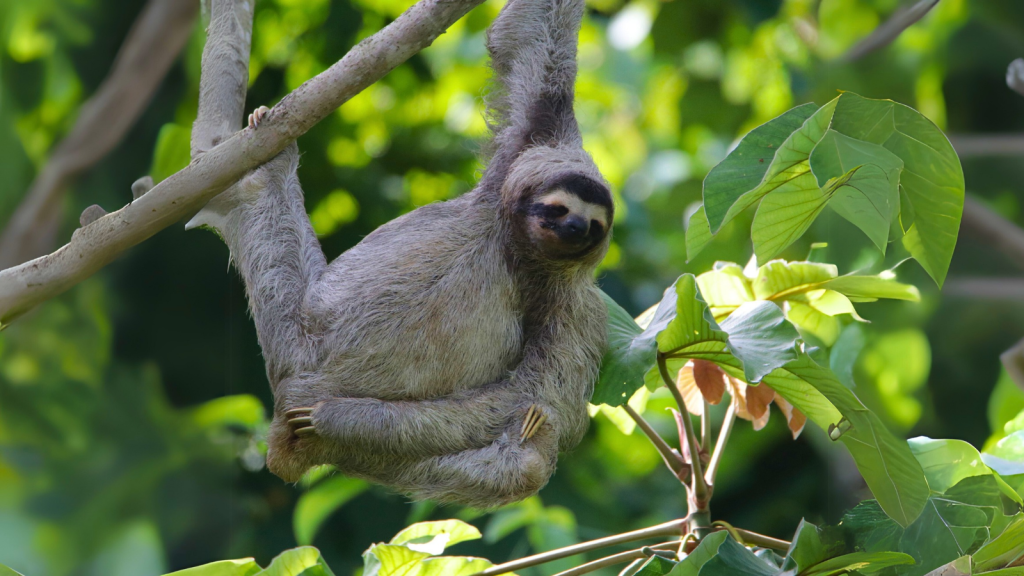
Most mammals, including humans, have seven neck vertebrae. Sloths, however, can have up to ten. This unique feature allows them to turn their heads nearly 360 degrees, giving them a wide field of vision without moving their bodies. This adaptation is particularly useful for spotting predators and finding food while expending minimal energy.
They Host An Entire Ecosystem In Their Fur
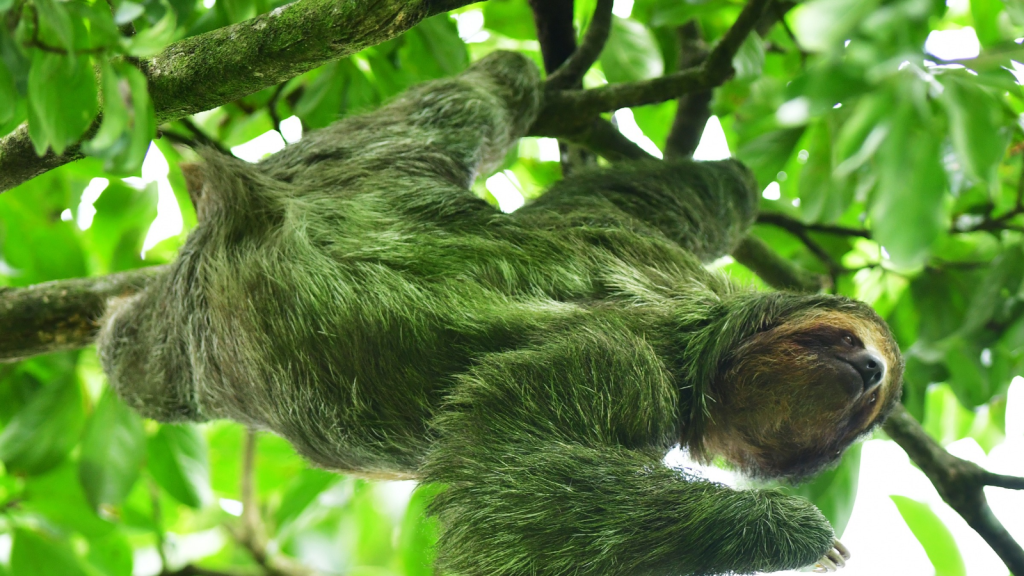
A sloth’s fur is home to a variety of algae, moths, and beetles. This miniature ecosystem provides camouflage for the sloth and a home for the creatures living in its fur. It’s a mutually beneficial relationship that helps all parties involved. The algae in their fur can also serve as a supplementary food source for sloths, providing additional nutrients to their diet.
Sloths Only Poo Once A Week

Sloths have one of the slowest digestive systems in the animal kingdom. It can take them up to a month to digest a single leaf. As a result, they only need to go to the loo about once a week. This infrequent toilet habit helps them avoid detection by predators. When they do descend to the forest floor to defecate, they can lose up to one-third of their body weight in a single trip.
They’re Related To Anteaters And Armadillos
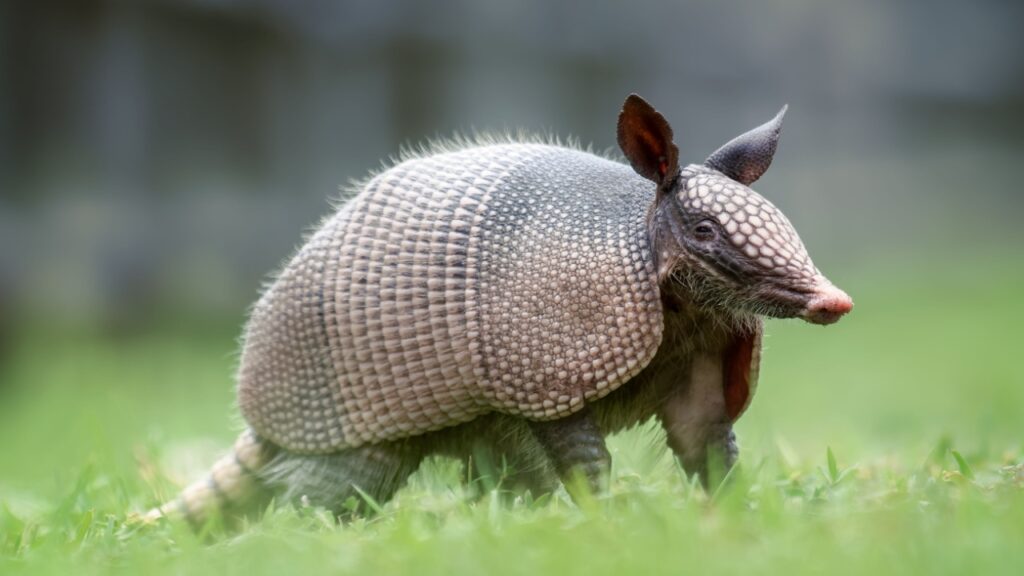
Sloths belong to the superorder Xenarthra, which also includes anteaters and armadillos. These animals share a common ancestor and have similar features, like long claws and low body temperatures. It’s a diverse family tree with some unexpected connections. All members of this group evolved in South America, showcasing the unique biodiversity of the continent.
Sloths Can Hold Their Breath For 40 Minutes
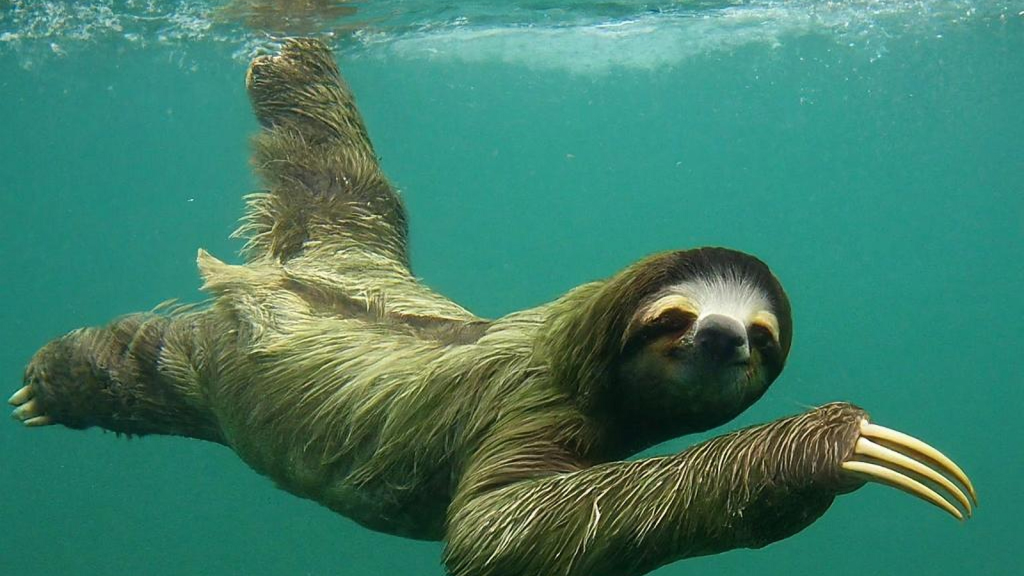
When swimming, sloths can slow their heart rate to one-third its normal pace. This ability allows them to hold their breath for up to 40 minutes underwater. It’s an impressive feat for an animal that spends most of its time in trees. This adaptation not only helps them swim but also allows them to survive if they fall into water from their treetop homes.
They Have Poor Eyesight But Great Hearing
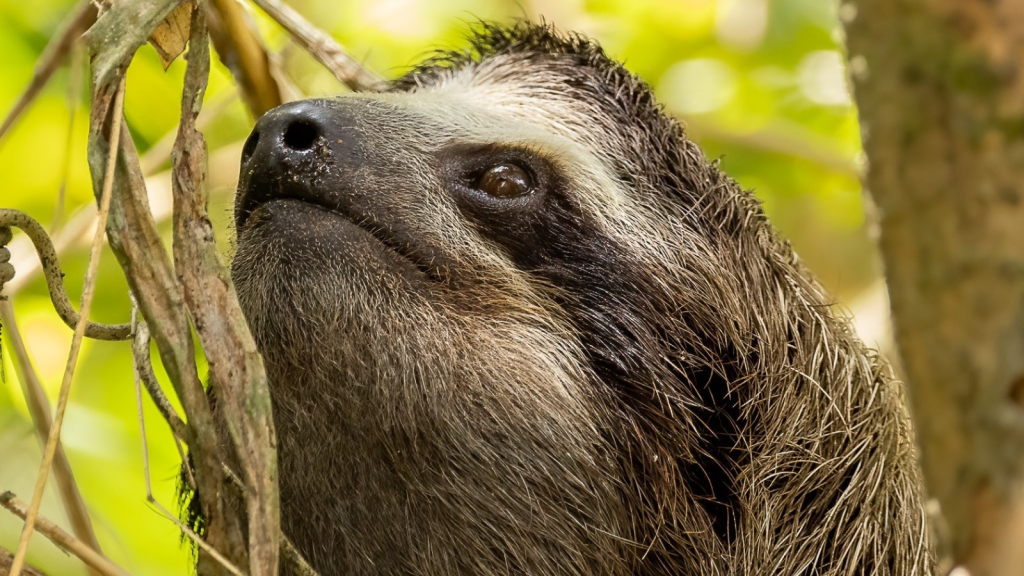
Sloths have poor vision, which isn’t a problem in their leafy habitats. However, they make up for it with excellent hearing. Their large, round ears can pick up sounds from far away, helping them detect predators and find mates. They also have a keen sense of smell, which aids in identifying suitable food sources and avoiding rotten or toxic leaves.
Sloths Sleep Less Than You Might Think
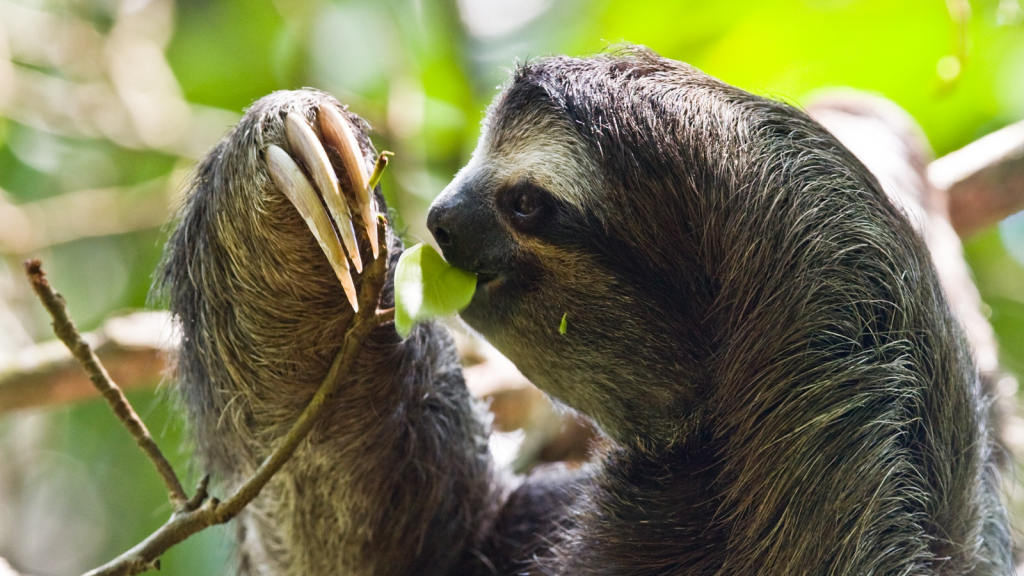
Despite their sleepy appearance, sloths only sleep about 10 hours a day in the wild. This is less than many other mammals. They spend most of their waking hours quietly munching on leaves and conserving energy. In captivity, however, sloths may sleep up to 20 hours a day due to the lack of predators and readily available food.
They Have A Powerful Grip
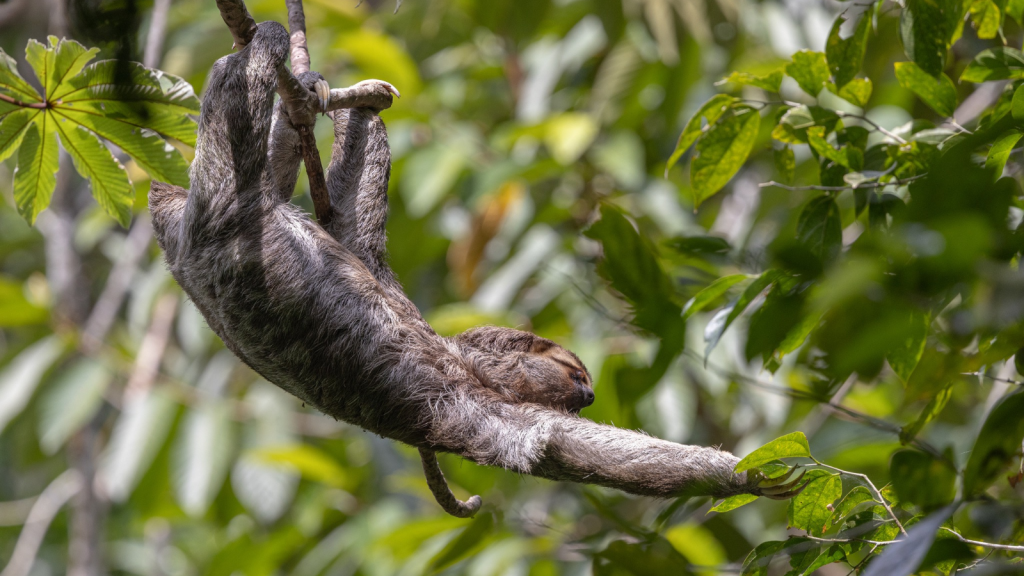
Sloths have incredibly strong arms and a powerful grip. They can hang upside down from a branch using just one arm. This strength is vital for their treetop lifestyle and helps them stay safe from ground-dwelling predators. Their grip is so strong that even after death, sloths have been known to remain hanging from branches, a testament to the power of their specialized limb muscles.
Baby Sloths Cling To Their Mothers For Months
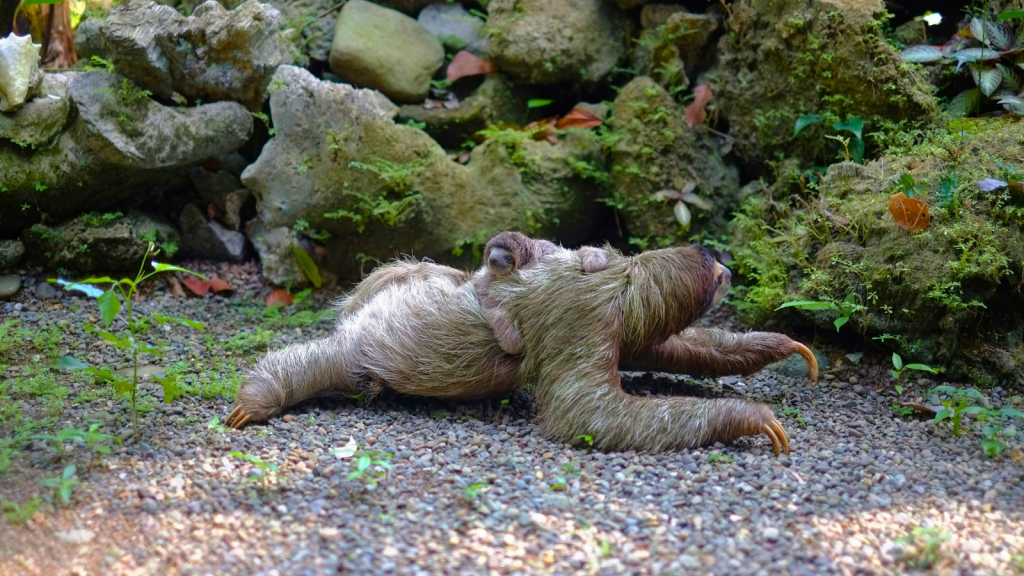
Newborn sloths cling to their mothers for the first few months of life. They learn what to eat by licking food from their mother’s mouth. This long period of dependency helps young sloths learn the skills they need to survive in the treetops. Baby sloths typically stay with their mothers for about six months before venturing out on their own.
Sloths Can Rotate Their Heads Like Owls
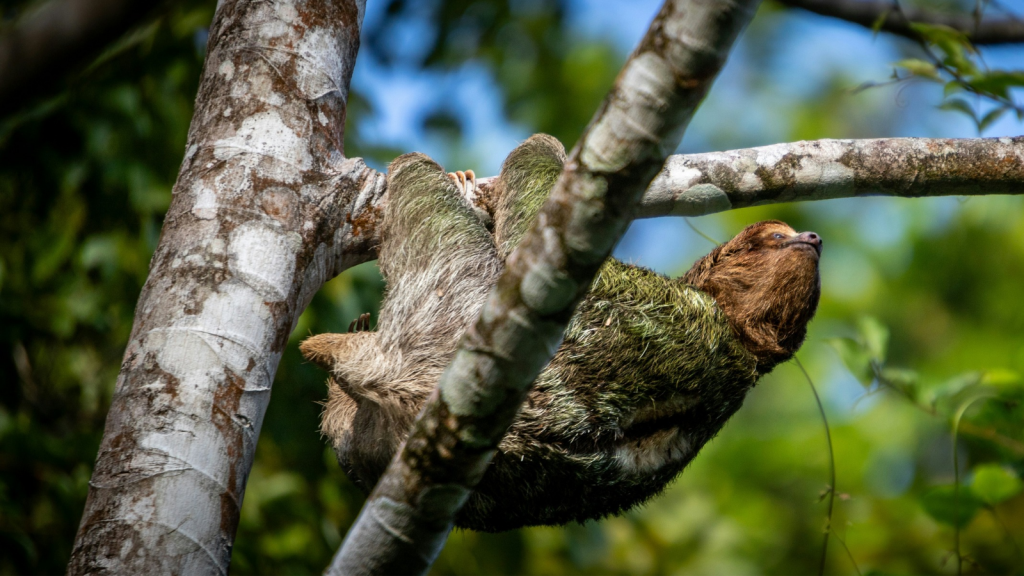
Thanks to their extra neck vertebrae, sloths can turn their heads up to 270 degrees. This owl-like ability allows them to keep an eye out for predators without moving their bodies, conserving precious energy. This adaptation is particularly useful when they’re hanging upside down, as it allows them to survey their surroundings thoroughly.
They Have An Unusually Low Body Temperature

Sloths have one of the lowest body temperatures of any mammal, ranging from 30 to 34 degrees Celsius. This low temperature helps them conserve energy and contributes to their slow metabolism. It’s a key part of their energy-efficient lifestyle. Their body temperature can fluctuate by up to 10 degrees Celsius throughout the day, further helping them adapt to changing environmental conditions.
Two-Toed Sloths Are Nocturnal
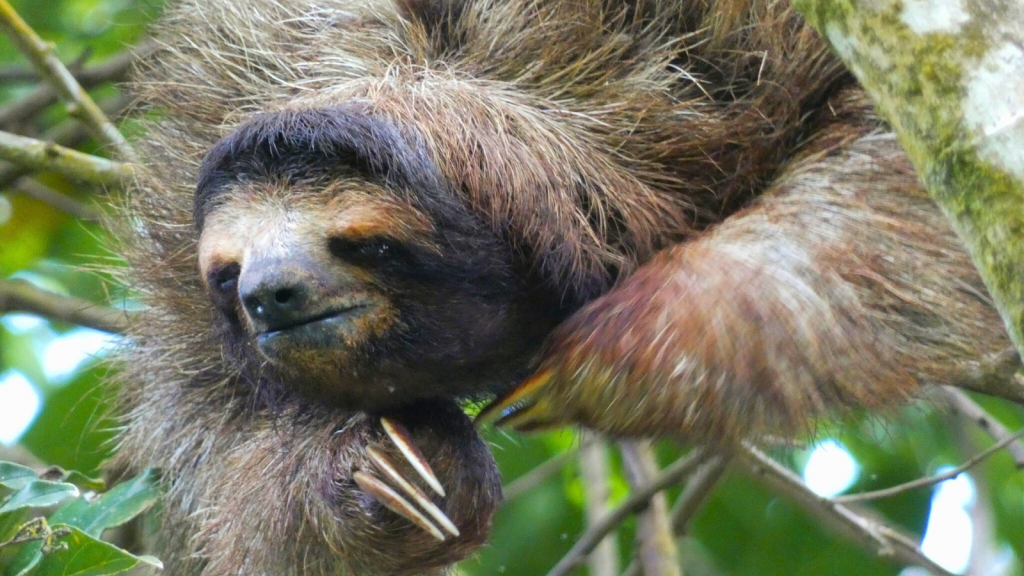
While three-toed sloths are active during the day, two-toed sloths are nocturnal. They sleep during the day and forage for food at night. This difference in activity patterns helps reduce competition between the two types of sloths in areas where they coexist. Two-toed sloths also have a more varied diet than their three-toed cousins, eating fruits and small rodents in addition to leaves.
Becky is a fervent wildlife enthusiast and pet care expert with a diploma in canine nutrition. Her love for animals stretches beyond the domestic, embracing the wild tapestry of global fauna. With over a decade of experience in animal welfare, Becky lends her expertise to OutlandishOwl through insightful articles, captivating wildlife information, and invaluable guidance on pet nutrition. Her work embodies a deep commitment to understanding the intricate lives of animals and a passion for educating others on sustaining natural habitats. Becky's hands-on conservation efforts and her knack for translating complex dietary science into practical pet feeding tips make her an indispensable voice for creatures great and small.

